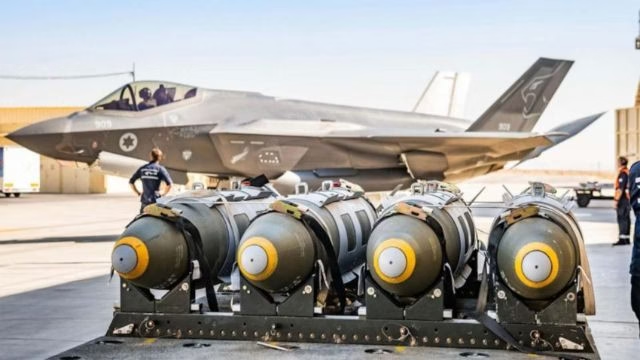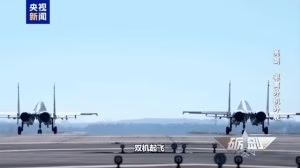How F-35 jets blinded Iran’s air defenses in a single hour

In the early hours of a spring night, Israel executed a stunning airstrike deep within Iranian territory, targeting over 100 military and logistical sites in a single hour, according to multiple reports. The operation, described by sources familiar with the matter as a meticulously coordinated assault, left Iran’s vaunted air defense network reeling, unable to mount an effective response.

The strike, which allegedly crippled radar systems, command centers, and ammunition depots, has raised pressing questions about the readiness of Iran’s military and the sophistication of Israel’s tactics. While neither nation has officially confirmed the full scope of the attack, the event marks a significant escalation in their long-standing shadow war, with implications that could reshape the region’s delicate balance of power.
The operation began with what sources describe as a “Silent Wave,” a term used to characterize the initial phase where Israeli F-35 Lightning II stealth fighters penetrated Iranian airspace undetected. These aircraft, designed by Lockheed Martin, are renowned for their ability to evade radar through advanced stealth technology, minimizing their thermal and electromagnetic signatures.
Unlike conventional aircraft, the F-35’s composite materials and angular design scatter radar waves, rendering them nearly invisible to systems like Iran’s Bavar-373, often touted as a domestic equivalent to Russia’s S-300. The Israeli jets reportedly focused on neutralizing air defense batteries, targeting the very systems meant to protect Iran’s skies. By striking radar installations and missile launchers first, Israel effectively blinded Iran’s ability to track incoming threats, paving the way for subsequent waves of the assault.
Iran’s air defense network, a patchwork of domestically developed and foreign-acquired systems, was caught off guard. The Bavar-373 unveiled in 2016, is designed to detect and engage multiple targets at ranges up to 200 miles, according to Iranian state media. Its phased-array radar and long-range missiles were intended to counter advanced threats, including stealth aircraft.
Similarly, the Khordad-15, another cornerstone of Iran’s air defense, can reportedly track and destroy six targets simultaneously at a range of 120 miles. Yet, during the strike, these systems failed to activate in time, with sources claiming that many were destroyed before they could even launch a single missile. The precision of the attack suggests an intimate knowledge of their locations, raising speculation about the role of intelligence in the operation’s success.
The assault didn’t stop at air defenses. Once the radar network was disabled, Israeli forces reportedly turned their attention to a range of high-value targets. Command headquarters of Iran’s Islamic Revolutionary Guard Corps [IRGC], mobile and stationary missile launchers, and ammunition depots were hit with surgical accuracy. The Kavosh and Mersad radar systems, critical for tracking aerial threats, were among the casualties, leaving Iran’s military communications in disarray.
Some batteries, in a desperate bid to respond, fired missiles blindly, without guidance, according to reports. This chaotic reaction underscores the extent to which Iran’s command-and-control structure was disrupted, a vulnerability that has sparked intense debate among military analysts about the state of its defenses.
The role of electronic warfare in the operation cannot be overstated. Israeli aircraft, likely including specialized platforms like the Boeing EA-18G Growler or similar systems, are said to have jammed Iran’s radar and communication networks, creating a virtual blackout. Electronic warfare involves emitting signals to interfere with or disable enemy sensors, a tactic Israel has honed in previous operations, such as the 2007 strike on a Syrian nuclear reactor.
By overwhelming Iran’s radar systems with noise or false signals, these platforms ensured that the F-35s could operate with impunity. The combination of stealth and electronic warfare created a lethal synergy, allowing Israel to strike deep within Iran without immediate retaliation.
How did Israel achieve such pinpoint accuracy? Reports point to a critical intelligence component, with allegations that Israel’s Mossad played a pivotal role in gathering real-time data on Iranian targets. Coordinates of radar stations, ammunition warehouses, and even the locations of technical crews were reportedly relayed to the Israeli Air Force hours before the strike.
This level of detail suggests a combination of human intelligence, signals interception, and possibly satellite imagery. The Mossad’s track record, including the 2018 theft of Iran’s nuclear archive from a Tehran warehouse, lends credence to these claims, though no official confirmation has emerged. The operation’s success hinges on this intelligence, which allowed Israel to exploit gaps in Iran’s defensive posture with unprecedented precision.
The F-35, at the heart of the operation, deserves a closer look. Officially known as the Joint Strike Fighter, it is a fifth-generation multirole aircraft capable of carrying up to 18,000 pounds of munitions, including precision-guided bombs like the GBU-31 JDAM. Its advanced sensor suite, including the AN/APG-81 radar and electro-optical targeting system, allows it to detect and engage targets with minimal exposure.
Compared to Iran’s air defense systems, the F-35 represents a generational leap. For instance, Russia’s S-400, considered one of the world’s most advanced air defense systems, struggles to detect stealth aircraft at long ranges, a challenge likely mirrored by Iran’s less sophisticated Bavar-373. The F-35’s ability to operate in contested airspace, combined with Israel’s expertise in integrating it with electronic warfare, made it an ideal platform for such a high-stakes mission.
Iran’s response, or lack thereof, has drawn scrutiny. The country’s military, long portrayed as a formidable regional force, appeared paralyzed. Some analysts suggest that the rapid pace of the attack overwhelmed Iran’s command structure, which relies heavily on centralized decision-making. Others point to potential weaknesses in training or maintenance, noting that even advanced systems like the Bavar-373 require skilled operators and regular upkeep to function effectively.
The random firing of missiles, as reported, indicates a breakdown in coordination, with units acting independently rather than as part of a cohesive defense. This raises questions about the resilience of Iran’s military infrastructure under pressure, especially against a technologically superior adversary.
The historical context of Israel-Iran tensions provides critical insight into the strike’s significance. The two nations have engaged in a shadow war for decades, with Israel conducting covert operations against Iranian nuclear facilities and proxy forces in Syria and Lebanon. Iran, in turn, has armed groups like Hezbollah and Hamas, which Israel views as existential threats.
Notable incidents include the 2018 Israeli airstrikes on Iranian targets in Syria and the 2020 assassination of nuclear scientist Mohsen Fakhrizadeh, widely attributed to Israel. These actions have fueled a cycle of retaliation, with Iran often responding through proxies or cyberattacks. The recent strike, however, marks a bold escalation, as it targeted Iran’s homeland directly, a move that could provoke a broader response.
The international reaction to the strike remains muted, with few official statements from major powers. The United States, Israel’s closest ally, has not publicly commented, though sources suggest Washington was informed prior to the operation. Russia and China, both suppliers of military technology to Iran, have called for restraint, according to state media reports.
The United Nations has yet to convene a formal discussion, reflecting the cautious approach of global actors wary of escalating tensions. The lack of concrete evidence about the strike’s scope complicates diplomatic responses, as both Israel and Iran may prefer to keep details ambiguous to avoid further escalation.
The operation’s success has sparked debate about the future of air defense systems. Iran’s reliance on domestically produced systems like the Bavar-373 and Khordad-15, while a point of national pride, may have exposed limitations in their design or deployment.
Compared to systems like the U.S. Patriot or Israel’s Arrow, which integrate multiple layers of sensors and interceptors, Iran’s defenses appear fragmented. The strike also highlights the growing importance of stealth and electronic warfare in modern conflicts, where traditional radar-based systems struggle to keep pace. For Iran, the attack could serve as a wake-up call to invest in more resilient technologies or to diversify its defensive strategies.
Geopolitically, the strike could shift the dynamics of the Middle East. Iran may seek to retaliate through asymmetric means, such as cyberattacks or proxy attacks, rather than direct confrontation, given its exposed vulnerabilities. Israel, emboldened by the operation’s success, may continue to press its advantage, targeting Iran’s nuclear program or regional allies.
The risk of miscalculation looms large, as either side could misinterpret the other’s actions, leading to a broader conflict. The involvement of external powers, particularly the U.S. and Russia, adds another layer of complexity, as their strategic interests in the region could amplify or dampen the fallout.
From a broader perspective, the strike underscores the evolving nature of warfare, where intelligence, stealth, and precision dominate. Israel’s ability to penetrate deep into Iranian territory, disable its defenses, and escape unscathed reflects a mastery of these elements. Yet, the operation also raises questions about the reliability of Iran’s military posture, which has long been a cornerstone of its regional influence.
The absence of a robust response suggests internal challenges, whether technical, organizational, or strategic, that Iran must address to restore deterrence. For the United States and its allies, the strike offers a case study of the effectiveness of advanced technology against a determined adversary, but it also serves as a reminder of the fragile balance in the Middle East.
The operation’s long-term impact remains uncertain. Will Iran overhaul its air defenses, seeking new technologies or alliances to counter future threats? Could this embolden Israel to pursue more aggressive actions, or will it prompt a reevaluation of its strategy to avoid provoking a larger conflict?
The answers depend on how both nations navigate the aftermath, as well as the responses of global powers watching from the sidelines. For now, the strike stands as a testament to the power of precision and preparation, but also as a warning of the risks inherent in a region where tensions simmer just below the surface.
***
Follow us everywhere and at any time. BulgarianMilitary.com has responsive design and you can open the page from any computer, mobile devices or web browsers. For more up-to-date news, follow our Google News, YouTube, Reddit, LinkedIn, and Twitter pages. Our standards: Manifesto & ethical principles.












